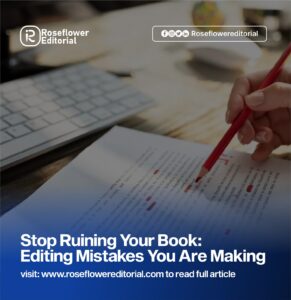“Your Statement of Purpose (SOP) is your chance to stand out. Without it, you risk blending in.” — Admissions Expert
Do you want to increase your chances of getting into your dream university, or are you willing to risk it all with a mediocre SOP? The Statement of Purpose (SOP) is often the deciding factor in whether you receive an acceptance letter or a rejection. Admissions officers sift through hundreds of applications, and your SOP is your chance to grab their attention. Crafting the right SOP can be the key to securing a spot in your desired programme, and applying the right strategy can be the difference between rejection and acceptance. University admissions are more competitive than ever. A well-optimised, ATS-compliant SOP doesn’t just showcase your achievements—it presents your story in the best possible light, ensuring it resonates with human readers and automated systems. Without the right strategy, your SOP might not even make it past the first review.
Here’s a puzzle for you: If an SOP can shape your future, which word in your SOP has the power to open doors to your dream university?

What is a Statement of Purpose (SOP)?
“The Statement of Purpose is not just a document; it is your chance to showcase who you are, why you matter, and why you’re the perfect fit for the programme you’re applying to.” A Statement of Purpose (SOP) is your essay that allows you to express your academic goals, motivations, and experiences, providing insight into why you’re applying to a particular programme.
It’s a critical part of the application process, often determining whether you’ll be accepted or rejected. It’s your opportunity to stand out among hundreds of applicants. An SOP serves as more than just a summary of your achievements—it reveals your passion and alignment with the programme’s goals.
In today’s competitive admissions landscape, it’s essential to ensure that your SOP is optimised for Applicant Tracking Systems (ATS). These systems scan for specific keywords related to the programme’s requirements. If your SOP doesn’t meet these criteria, it might not even be seen by the admissions team. Optimising for ATS involves incorporating relevant keywords, a clear structure, and easy-to-read formatting to ensure your SOP doesn’t just captivate human readers but also passes the initial ATS screening.

Key Elements of a Winning SOP
Did you know that admissions officers spend only 3 to 5 minutes reading an SOP on average? According to The Graduate School at Stanford University, this brief time means your SOP has to make an impact quickly or risk being overlooked.
The key to a winning SOP lies in a few fundamental elements: a clear structure, compelling personal storytelling, and a professional yet personal tone. Start with a strong introduction that grabs attention, build a body highlighting your key achievements and experiences, and conclude by summarising why you’re the ideal candidate. Personal storytelling is crucial—it’s not enough to list accomplishments; you need to craft a narrative that resonates with admissions officers and makes them feel like they know you.
Striking the right balance between professionalism and a personal touch is essential, as your SOP should be polished but also reveal your personality. Finally, ATS optimisation is non-negotiable—by incorporating relevant keywords and structuring your SOP clearly, you ensure it passes the ATS filters and gets seen by a human reader. ATS systems are designed to look for specific words, so understanding what keywords matter to your programme is vital. For example, “data analysis” for computer science, “research methodology” for social sciences, or “clinical skills” for medical applications can help boost your visibility.
So, here’s a funny thought: writing an SOP isn’t a race, but if it were, it’d be the only one where you’re competing with thousands of other applicants for the gold medal!
The Secret Strategy for Crafting Your SOP
What if I told you that the first sentence of your Statement of Purpose (SOP) could determine whether you make it past the first round of university admissions? Research by Kaplan found that admissions officers spend just 3 to 5 minutes on each SOP. In those few minutes, your opening lines must grab attention, set the tone, and showcase your potential.
The “hook” is essential—it’s your opportunity to instantly show why you belong in the programme. Whether it’s a surprising fact, a personal anecdote, or a bold statement, make it count. But that’s just the start—authentic self-representation is key. You must show who you truly are, your personal growth, and why this programme is the logical next step in your journey.
Avoid generic statements and focus on specificity. Instead of saying, “I have always been interested in computer science,” say, “Building my first app at 15 sparked a passion in me that led me to create a startup focused on AI solutions.” Be specific in your goals and achievements to demonstrate your uniqueness and drive.

The Strategy Every Applicant Must Know
The strategy every applicant must adopt is simple: highlight the right experiences, achievements, and passions. Avoid the temptation to be too modest—this is your time to shine! Showcase moments when you overcame challenges or achieved significant milestones. Your SOP should tell the story of who you are, not just a list of facts. Be sure to integrate your passion, perseverance, and the lessons you’ve learned. The more personal and specific you can be, the more your SOP will stand out from the rest.
The Psychology of a Perfect SOP
What are admissions officers truly looking for in an SOP? According to the University of California, they seek “demonstrated passion, academic potential, and a clear sense of purpose.” Your SOP should convey your dedication, your purpose, and how this particular programme aligns with your long-term goals.
However, it’s not just about facts; emotions play a huge role. Crafting an emotional appeal can be the bridge between your achievements and the admissions officer’s heart. It’s not about being overly sentimental, but rather about using your experiences to connect on a human level. Share a meaningful personal story that resonates, showing your vulnerability and growth.
Psychology of a Perfect SOP: Unlock the Secret to Winning Over Admissions
Vulnerability can be your strongest asset. For example, if you faced a personal struggle that impacted your academic performance, explaining how you overcame it and what it taught you can add depth to your SOP. Admissions officers are looking for applicants who have a genuine passion for their field, and showing how you’ve grown through adversity can make you stand out.
Top Mistakes to Avoid
A great SOP can be the difference between acceptance and rejection, but many applicants fall into common pitfalls. Vague language is a major red flag; general statements like “I am passionate about business” don’t say much. Instead, show how you’ve demonstrated this passion through concrete actions. Failing to personalise your SOP is another mistake—make sure you’re not writing a generic essay that could apply to any programme. Admissions officers read hundreds of similar statements, so make yours unique.
Also, poor structure can leave your SOP feeling disorganised and hard to follow. A well-structured SOP with clear, cohesive sections will engage the reader and keep them interested.
Top 5 Mistakes to Avoid in Your SOP for Guaranteed Admission
- Using vague or cliché language like “I’ve always loved science.”
- Failing to demonstrate how your past experiences align with your future goals.
- Using a generic SOP template instead of personalising it.
- Overloading with irrelevant information or going off-topic.
- Neglecting the importance of proofreading and editing.
The Final Touch: Editing and Proofreading
Once you’ve written your SOP, don’t rush to submit it. Editing and proofreading are crucial to making sure your SOP shines. ATS-friendly formatting should not be overlooked; ensure your document is clear, concise, and uses headings, bullet points, and short paragraphs for easy reading.
Review it yourself, but also consider having others look over it for feedback. A peer review can help catch mistakes you missed and provide insight on clarity. If you want to ensure your SOP is flawless, it may be worth hiring a professional editor. They can fine-tune your language and structure, helping you present yourself in the best light possible.
Why Proofreading is Key to a Successful SOP
Consider using tools like Grammarly or ProWritingAid to catch grammatical errors, or hire an editor from a professional service. The final polish can elevate your SOP from good to exceptional.
Conclusion: Securing Your Admission with the Perfect SOP
By now, you should have a solid understanding of the key strategies for crafting an outstanding SOP. From using an attention-grabbing hook to being authentic, specific, and emotionally compelling, your SOP is your chance to present the best version of yourself. Don’t forget to optimise for ATS, avoid common mistakes, and give your SOP a final polish through editing and proofreading.
Ready to take the first step towards securing your place in your dream programme? Start writing your SOP using these strategies or contact Roseflower Editorial to ensure your SOP is optimised for success. We’ve helped over 10 students secure spots in their dream universities in Canada, the UK, and beyond—let’s make yours next.
Don’t forget to follow us on Instagram, Facebook, LinkedIn, and our website to stay updated with the latest articles. Stay tuned for more exciting content!
In case you missed our previous article, kindly click here.













3 Responses
I have realised my SOP writing inadequacies.
Thank you for this article.